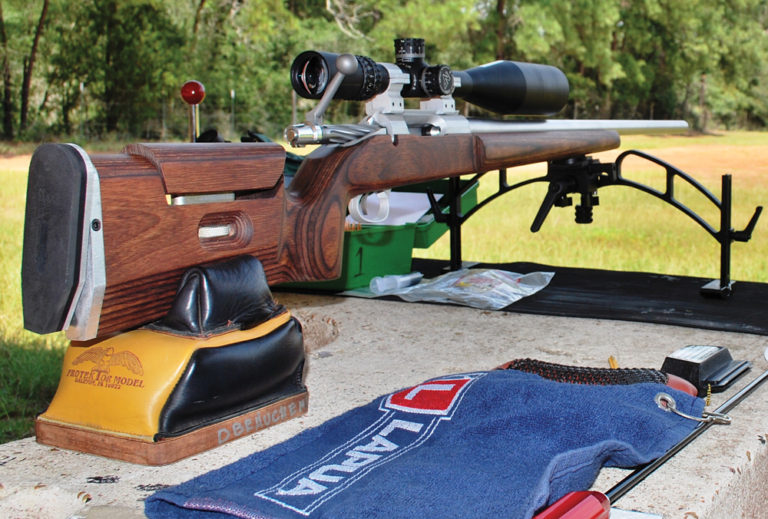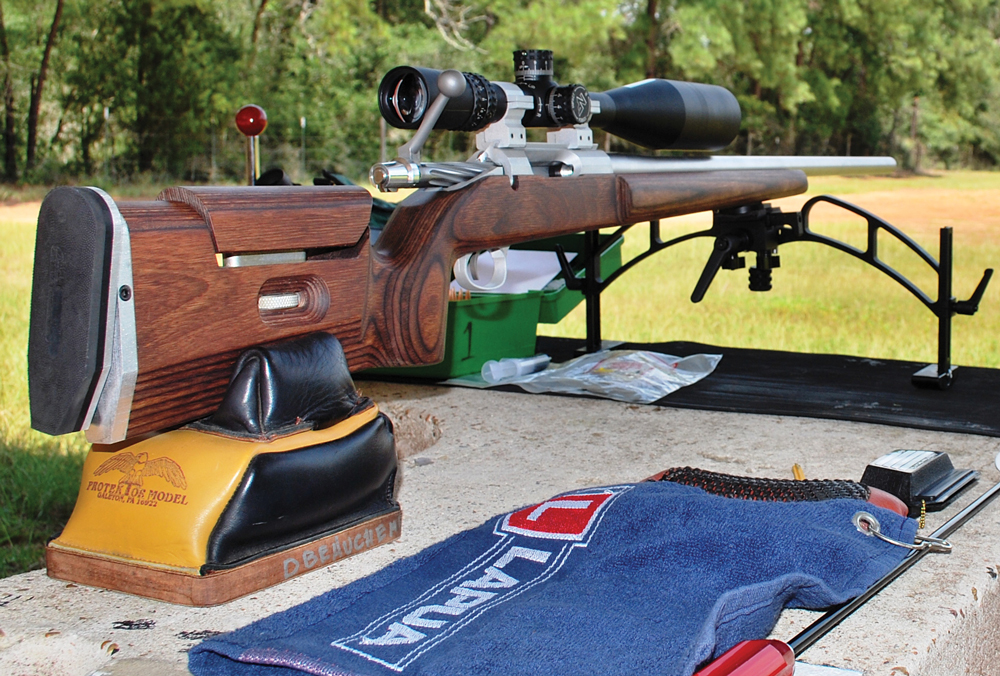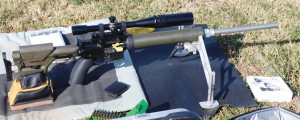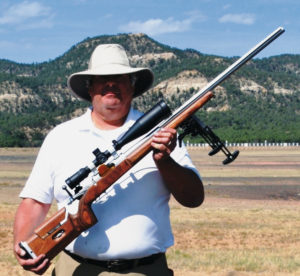

It takes a special rifle to be competitive in a 1,000 yard shoot. The F-Class rifle is up to the job.
Let’s say you’ve decided you want to shoot F-TR [F-Class Target Rifle – Editor], because you have a nice, heavy-barreled .223 or .308 rifle that shoots lights out, sub-MOA, all day long, as long as you do your part. You have a Harris bipod, and the rifle is topped by a 12X scope. I think that is an excellent idea, but probably for different reasons than you would expect.
The way I see it, you aren’t going to waste any money up front. Instead, you will show up at a competition and experience first-hand what it’s like. The good thing about using old Thor’s Hammer, or Daisy or whatever you call your rifle, is that you will observe a few things that will help you in your quest and not make you spend tons of money just to get to the first match. There will be plenty to learn and lots of time to upgrade your equipment, if you decide you want to continue.
Among the first observations you will make is that the targets are small and far away, so more scope magnification would be nice, and the reticle should not wipe out the 10- and X-rings. Also, the 15- or 20-round matches heat up the barrel, and you may experience point-of-impact shift, which can be disconcerting during a string. If you’re shooting LR [Long Range – Editor], you may be wondering if that miss was due to ammo, marksmanship, or conditions. It could be all three.

I am currently on my third F-TR rifle, and while the first two where production rifles I’d had re-barreled with long, top of the line, heavy barrels, my most recent one was built to my exact specifications for long-range competition. My first rifle was an AR-15, to which I fitted a 26-inch Krieger Varmatch barrel with a .920-inch overall diameter (OD). I still use this rifle for MR [Mid-Range – Editor] competitions, using 80-grain bullets, and I have attained High Master at that distance with it. It is amazingly precise and just a joy to shoot. At long range, however, the 80-grain bullets are toys for the conditions. If the wind was calm they’re fine, but calm days are rare at long range.
My second rifle was an old Ruger M77, to which I had fitted a phenomenal 32-inch Broughton 7.9-contour barrel. I also changed the stock to a Boyd’s and the trigger to a Timney, so the only Ruger component left is the action. That rifle did very well for me, and I still keep it as my backup in big matches.
My current rifle is made up of premium components that were assembled by a competition gunsmith. The action is a Stolle Panda F-class, right-hand, right-bolt, micro-port and no ejector from Kelbly’s. The trigger is a Jewell, the one-ounce version with no safety and no bolt release. The stock is the laminate F-TR model from Precision Rifle and Tool, with the three-way adjustable buttplate and the Anschütz rail underneath the fore-end.

Scope rings are from Kelbly’s and are mounted on the integrated 20 MOA rib on the receiver. The scope is a Nightforce NXS 12-42X56mm with 1/8 MOA adjustments and an NP-2DD reticle. The barrel is a Krieger 32-inch 1:11 twist stainless steel barrel with a medium-heavy Palma contour.
Designing an F-TR rifle is a budget game; you always want the heaviest, longest barrel you can get, but you are limited by the weight restrictions of the F-class game. The last thing you want is to show up at a big match and find out your rifle is over the 18.18-pound limit. Once you have all the component weights figured out (including the rifle, scope, rings, and the bipod), you can then play around with the barrel contour and length to get close to but not over the limit.
Know that fluting isn’t really a good idea, because it reduces the rigidity of the barrel, as well as the quantity of heat sink material (i.e., the barrel steel). I wanted the 32-inch length in order to get as much muzzle velocity as possible without having to go over maximum on my loads, and I was willing to sacrifice some contour (but no fluting). You do want the barrel bead blasted, because that really does promote cooling.
My target weight was 17 pounds, 12 ounces, so as to provide some leeway in case of a bad scale somewhere or a mistake in my calculations. As it is, the total rifle weigh comes to 17 pounds and 8.5 ounces. The stock is five pounds, including finish and pillar bedding; the action is 1.9; the trigger is 0.15; the rings are 0.25; the bipod is 1.96; the scope is 2.13; and the anti-cant device is 0.1-pound. The barrel worked out to be 6.15 pounds after chambering and prep.
Editor's Note: This is an excerpt from the article “So You Want to Shoot F-Class?” appearing in the Gun Digest 2014 annual book.

Next Step: Get your FREE Printable Target Pack
Enhance your shooting precision with our 62 MOA Targets, perfect for rifles and handguns. Crafted in collaboration with Storm Tactical for accuracy and versatility.
Subscribe to the Gun Digest email newsletter and get your downloadable target pack sent straight to your inbox. Stay updated with the latest firearms info in the industry.

![Best Concealed Carry Guns In 2025 [Field Tested] Wilson Combat EDC X9S 1](https://gundigest.com/wp-content/uploads/Wilson-Combat-EDC-X9S-1-324x160.jpg)


![Best 9mm Carbine: Affordable PCCs [Tested] Ruger Carbine Shooting](https://gundigest.com/wp-content/uploads/Ruger-Carbine-Shooting-100x70.jpg)
![Best AR-15: Top Options Available Today [Field Tested] Harrington and Richardson PSA XM177E2 feature](https://gundigest.com/wp-content/uploads/Harrington-and-Richardson-PSA-XM177E2-feature-100x70.jpg)
